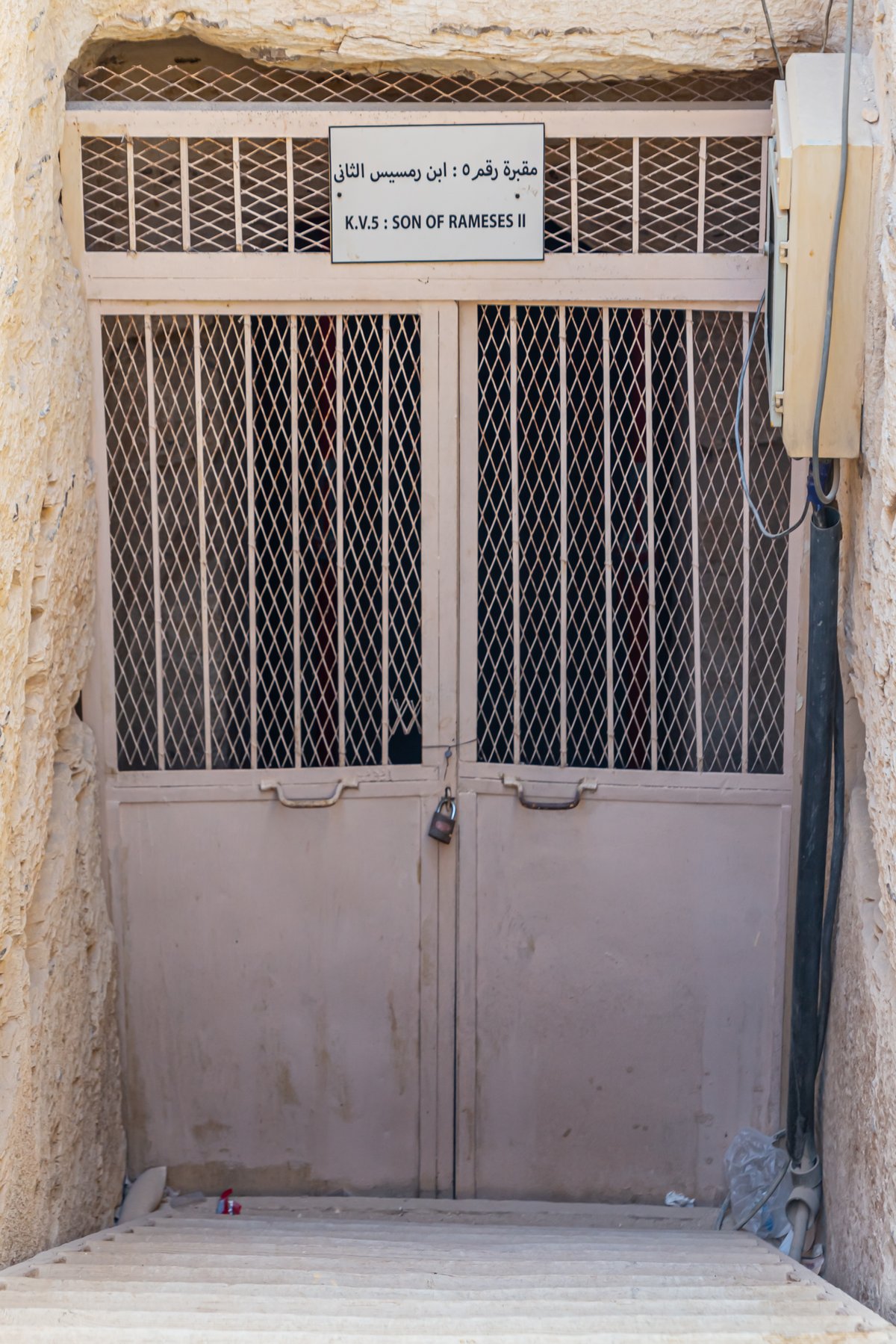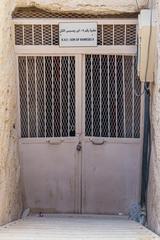
KV5 Luxor Visiting Hours, Tickets, and Historical Significance Guide
Date: 14/06/2025
Introduction
Nestled within Egypt’s renowned Valley of the Kings near Luxor, KV5 stands as the largest and most architecturally complex royal tomb yet discovered in the region. Originally noted in the early 19th century, KV5 was largely ignored for decades until its dramatic rediscovery in the late 20th century. Excavations unveiled a labyrinth of over 120 chambers, most dedicated to the sons of Ramesses II, one of Egypt’s most prolific pharaohs. This monumental discovery has redefined the scope of New Kingdom funerary architecture and provided unparalleled insights into royal family burial practices, dynastic continuity, and the construction expertise of ancient Egyptian builders.
Today, KV5 is recognized as a testament to Ramesses II’s focus on his lineage and the religious significance he placed on the afterlife of his numerous children. Its rediscovery by Dr. Kent R. Weeks and the Theban Mapping Project in the 1980s and 1990s provided Egyptology with a wealth of artifacts—ushabti figurines, canopic jar fragments, wall reliefs, and even mummified remains—that shed light on 19th Dynasty royal customs. Despite natural flooding and preservation challenges, ongoing archaeological efforts continue to enhance our understanding of this extraordinary site.
This comprehensive guide equips you with essential information on KV5’s historical significance, architecture, key discoveries, preservation challenges, and practical advice for visiting Luxor’s Valley of the Kings. Whether you are a history enthusiast or a traveler seeking to explore Egypt’s ancient monuments, this resource will help you plan a safe, respectful, and enriching visit. For official updates and further details, consult the Theban Mapping Project and Egypt’s Ministry of Tourism.
Table of Contents
- Discovery and Rediscovery of KV5
- Architectural Features and Layout
- The Royal Family Mausoleum: Purpose and Use
- Key Archaeological Discoveries
- Preservation Challenges
- KV5’s Archaeological Significance
- KV5 in the Valley of the Kings
- Visitor Information: Hours, Tickets, and Tips
- Frequently Asked Questions (FAQ)
- Responsible Tourism and Travel Tips
- Conclusion and Further Resources
Discovery and Rediscovery of KV5
Early Exploration and Neglect
KV5 was first noted in 1825 by the English explorer James Burton, who discovered Ramesses II’s name carved at its entrance. However, after clearing the first few chambers and finding no remarkable artifacts or decorations, Burton abandoned further investigation (Ancient Society). In 1902, Howard Carter briefly uncovered the doorway but dismissed KV5 as unimportant and reburied the entrance (TheTravel). For decades, KV5 remained obscured, even serving as a dumping ground for debris.
Modern Rediscovery and Excavation
The tomb’s true significance emerged in 1987, when Dr. Kent R. Weeks and the Theban Mapping Project relocated the entrance while surveying the valley. Clearing efforts revealed decorated reliefs and thousands of objects. In 1995, the full extent of KV5 was realized—far larger and more intricate than previously believed, it became the largest tomb in the Valley of the Kings (Historical Eve; Theban Mapping Project).
Architectural Features and Layout
KV5 is unmatched in the Valley of the Kings for its scale and complexity. More than 120 chambers and corridors have been identified, and ongoing excavations suggest this number could increase (Historical Eve). The tomb’s plan is unusual: after the columned chamber, the main axis shifts; corridors are stacked vertically, and there are sectors running underneath the entrance. The largest chamber, supported by sixteen pillars, features scenes from the “Opening of the Mouth” ritual, depictions of Ramesses II, his sons, and various deities. The repetitive expansion of corridors and rooms reflects the tomb’s evolving function as a family mausoleum for Ramesses II’s numerous children.
The Royal Family Mausoleum: Purpose and Use
Constructed during Ramesses II’s reign (1279–1213 BCE), KV5 served as a collective burial place for his sons, and possibly some daughters—a unique feature in the Valley of the Kings, where tombs typically housed individuals (Ancient Society). The tomb was expanded as needed to accommodate additional royal family members. Inscriptions and wall reliefs confirm its function as a mausoleum for the king’s offspring, highlighting the importance Ramesses II placed on his children’s afterlife.
Key Archaeological Discoveries
Despite damage from flooding and time, KV5 has yielded a diverse array of artifacts and evidence:
- Ceramic vessels and pottery: Some inscribed with names of royal children.
- Ushabti figurines: Funerary statuettes for afterlife service.
- Faience and glass jars: Some with royal inscriptions.
- Ostraca: Inscribed pottery and limestone flakes, offering administrative and ritual data.
- Jewelry and amulets: Personal adornments and protective items.
- A statue of Osiris: Symbolizing resurrection.
- Human remains: At least six mummies, likely royal children, though identification is ongoing (Historical Eve).
Wall scenes and inscriptions, although heavily damaged, depict the sons of Ramesses II in the presence of gods and include references to funerary rituals (TheTravel). Surviving texts from the Book of the Dead and other funerary literature have also been documented (Wikipedia; Ancient Origins).
Preservation Challenges
KV5 has endured significant threats over the centuries:
- Flooding: Located on lower ground, the tomb suffered repeated flash floods that filled chambers with debris and destroyed wall decorations (Geoenvironmental Disasters).
- Salt damage: Groundwater causes salt crystallization, leading to flaking and loss of painted surfaces (Nature).
- Tourism impact: Increased humidity, temperature, and dust from visitors have accelerated deterioration.
- Urban development: Construction nearby has affected the valley’s hydrology, raising flood risks (Academia.edu).
Conservation efforts led by the Theban Mapping Project include drainage installations, protective barriers, and stabilization of wall paintings. Advanced technologies such as 3D modeling and ground-penetrating radar help assess and mitigate risks (World Archaeology).
KV5’s Archaeological Significance
The discovery of KV5 dramatically expanded scholarly understanding of New Kingdom burial practices. Its vast, multi-chambered design revealed the Valley of the Kings was not just for individual pharaohs but could serve as a collective royal necropolis (World Archaeology). The tomb’s artifacts and inscriptions have clarified the genealogy of Ramesses II’s family, illustrated the logistical capabilities of ancient builders, and provided rare glimpses into daily life and funerary customs of the royal household (Ancient Society; Historical Eve).
KV5 in the Valley of the Kings
KV5 is situated near the tombs of Ramesses II (KV7) and Tutankhamun (KV62), underlining its central place in the royal necropolis (Historical Eve). Its proximity to major sites makes it a focal point for archaeological research and a highlight for visitors to Luxor’s West Bank (TheTravel).
Visitor Information: Hours, Tickets, and Tips
Opening Hours and Access
- Valley of the Kings Hours: Open daily from 6:00 AM to 5:00 PM. Ticket offices close at 4:00 PM.
- KV5 Access: KV5 is generally closed to the public due to ongoing research and conservation. Access is typically limited to special tours, research permits, or rare public openings. Always verify current status with the Supreme Council of Antiquities or your tour operator (Flashpacking Family).
Tickets
- General Admission: Standard tickets to the Valley of the Kings cost EGP 750 for adults and EGP 375 for students/children (under 12 free; under 6 free).
- Special Tombs: Additional tickets are required for Tutankhamun (KV62), Seti I (KV17), and Ramesses V/VI (KV9).
- KV5 Entry: Usually not included due to limited access; inquire about special tours if interested (Flashpacking Family).
On-Site Facilities
- Visitor Center: Restrooms, café, and souvenir shop.
- Shuttle Service: Electric shuttle vehicles transport visitors from the center to tomb entrances; tickets required.
Accessibility
- The terrain is uneven, and most tombs—including KV5—are not wheelchair accessible.
- Wear sturdy shoes and bring sun protection.
Photography
- Mobile Phones: Usually allowed for free.
- Professional Cameras: Fee (approx. EGP 50); flash prohibited.
- Conduct: Do not touch walls or artifacts (Flashpacking Family).
Best Times to Visit
- Arrive at opening (6:00 AM) or after 2:00 PM to avoid peak crowds and heat (Responsible Travel).
Frequently Asked Questions (FAQ)
Q: Is KV5 open to the general public?
A: No, KV5 is usually closed due to preservation and research. Special access may be arranged through tours or academic permits.
Q: What are the visiting hours?
A: The Valley of the Kings is open from 6:00 AM to 5:00 PM daily; check for seasonal variations and KV5’s current accessibility.
Q: How much are tickets?
A: General Valley tickets are EGP 750 for adults, EGP 375 for students/children. Special tombs have additional fees.
Q: Are there facilities at the Valley?
A: Yes—restrooms, café, and a souvenir shop are available at the entrance.
Q: Is KV5 wheelchair accessible?
A: No, and most tombs in the valley are not due to their ancient structure.
Q: Can I take photographs inside the tomb?
A: Usually yes for mobile phones (without flash); professional cameras require a fee. Always follow posted rules.
Responsible Tourism and Travel Tips
- Do not touch ancient surfaces.
- Dispose of litter responsibly.
- Stay on marked paths.
- Respect photography restrictions.
- Hire licensed local guides.
- Support local craftspeople and vendors.
- Ask permission before photographing people.
- Use reusable water bottles and wear sun protection.
- Limit group size to reduce site wear.
- Respect restricted areas and ongoing excavations.
Conclusion and Further Resources
KV5 is a monumental testament to Ramesses II’s family and the grandeur of New Kingdom burial traditions. While public access remains limited, its discovery has transformed our understanding of royal lineage and funerary culture. Visitors to Luxor can explore the Valley of the Kings, enjoy guided tours, and utilize digital resources for a deeper appreciation of Egypt’s ancient past.
For up-to-date information on tickets, accessibility, and conservation, consult the Supreme Council of Antiquities, Theban Mapping Project, and the Ministry of Tourism and Antiquities.
Download the Audiala app for expert-guided tours, interactive maps, and the latest visitor updates. Follow us on social media for news on Egyptian archaeology and responsible travel tips.
References and Further Reading
- Ancient Society – Exploring KV5
- TheTravel – Largest Tomb in Egypt’s Valley of the Kings
- Historical Eve – KV5: Largest Tomb Ever Found in Egypt
- Theban Mapping Project – Valley of the Kings
- Egypt Travel – Valley of the Kings
- Wikipedia – KV5
- Ancient Origins – Secrets and Treasures of KV5
- World Archaeology – KV5: Largest Tomb in the Valley
- Geoenvironmental Disasters – Flood Impact on the Valley
- Nature – Conservation Challenges
- Egypt Planners – Valley of the Kings
- Academia.edu – Preservation Challenges in Luxor
- Flashpacking Family – Valley of the Kings Guide
- Private Tours in Egypt – Luxor Attractions
- Responsible Travel – How to Avoid the Crowds
- Springer Link – Living Heritage in Luxor































































